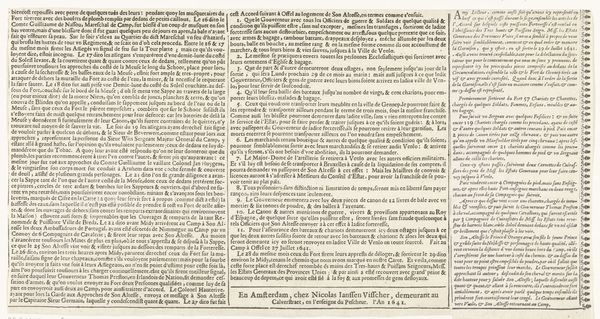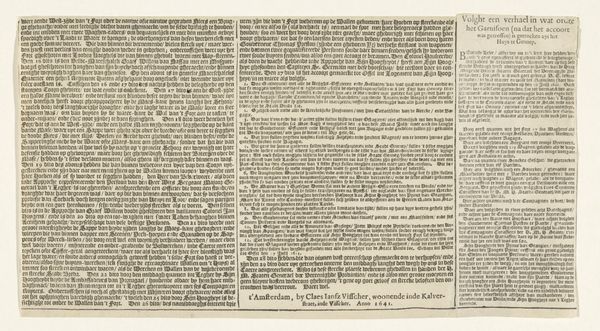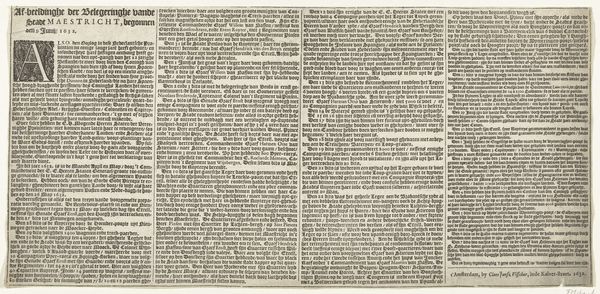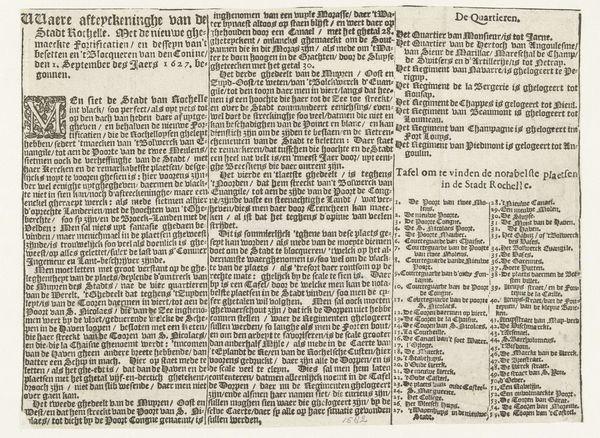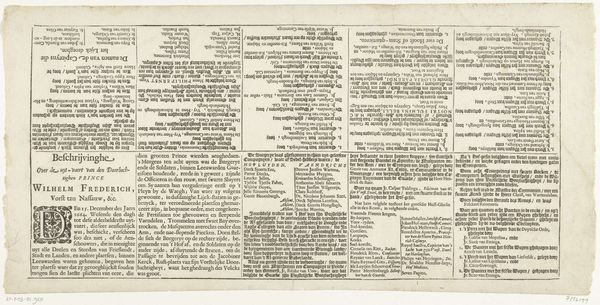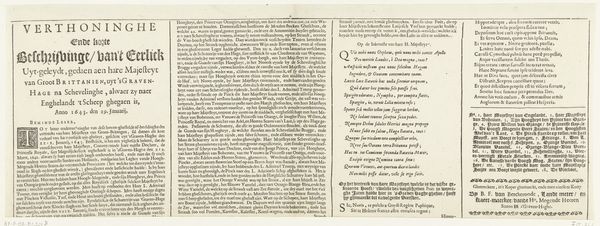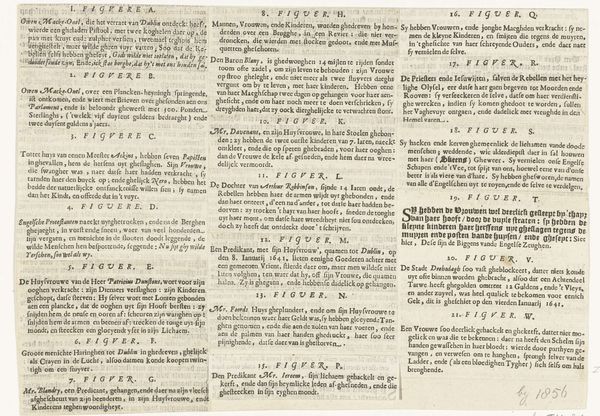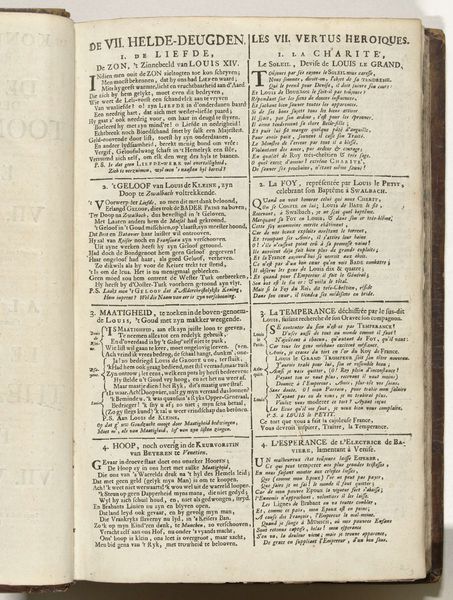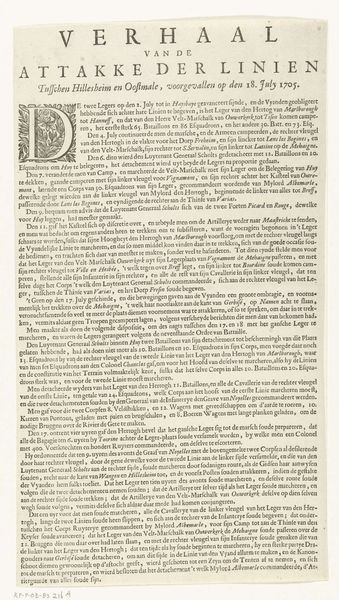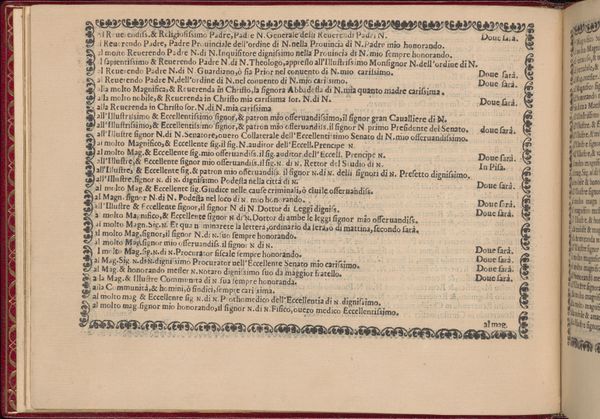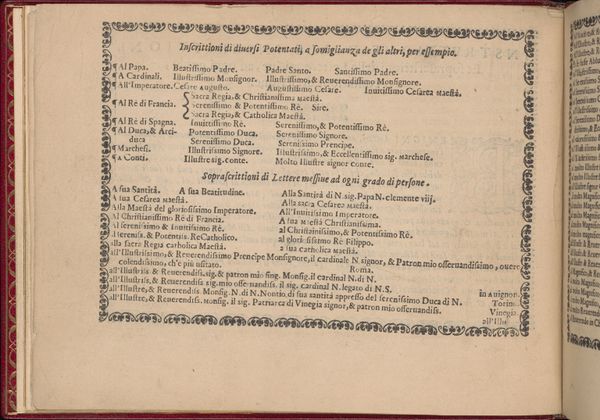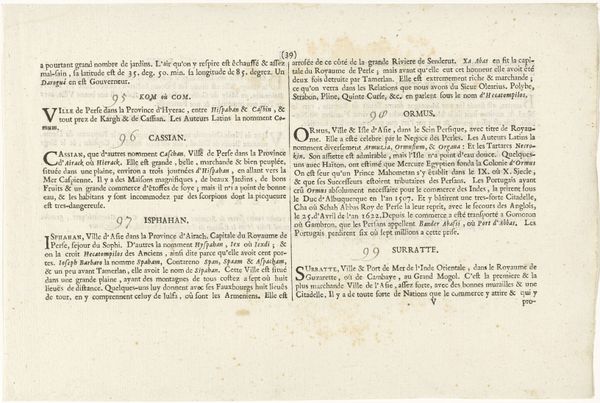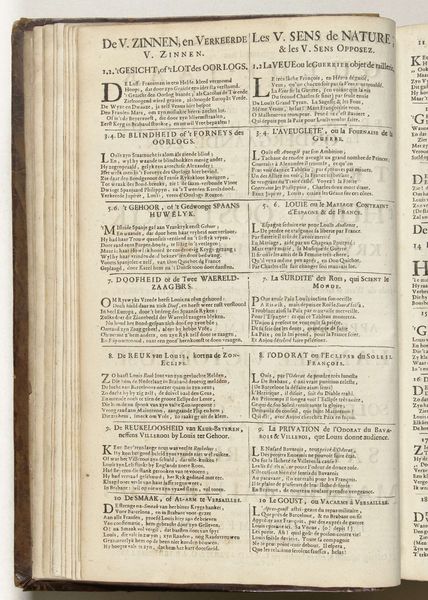
print, etching, textile, paper
#
narrative-art
# print
#
etching
#
textile
#
paper
#
history-painting
Dimensions: height 166 mm, width 479 mm
Copyright: Rijks Museum: Open Domain
Editor: So, this is “Beleg van Schenckenschans,” or “Siege of Schenckenschans,” made in 1635 by Willem Hondius. It’s an etching on paper and it’s text-heavy. What I notice is the almost overwhelming density of script. It seems like it wants to communicate a lot. What sort of message is it conveying? Curator: Indeed, the script is central here. This is not merely descriptive text; it's a carrier of memory. Consider the history—the siege itself—as a kind of trauma for the Dutch Republic. Hondius’ print is a form of remembering and memorializing that event. Do you see how the sheer volume of text might suggest a collective effort to ensure this history isn't forgotten? Editor: That's interesting. So, it’s less about illustrating the battle and more about embedding it in cultural memory. Curator: Precisely. Think about how repeated narratives, especially those tied to pivotal events, shape national identity. Hondius is essentially creating a script for national remembrance, ensuring that future generations will read, and therefore remember, the struggles and triumphs of their ancestors. The choice of Dutch, the vernacular language, underscores this nationalistic aim. How might this function as a tool of cultural consolidation? Editor: I suppose by repeatedly encountering this narrative in their own language, people would feel a stronger connection to their shared history and identity. Curator: Exactly. Consider how symbols and narratives like these function in later historical conflicts, shaping the way societies understand themselves and their place in the world. A shared visual and textual culture is powerful. Editor: That makes me see the work completely differently! I initially saw just a page of text, but it is actually about shaping national identity and making history a cultural artifact. Curator: It's a reminder that even the simplest image carries the weight of cultural memory and the power to shape future narratives.
Comments
No comments
Be the first to comment and join the conversation on the ultimate creative platform.
